
Red ocean vs Blue ocean strategy Download Scientific Diagram
In the vast expanse of marketing, two distinct strategies have emerged as extremely powerful guiding stars: the Red Ocean and the Blue Ocean. As a marketer setting sail on the digital seas, understanding these strategies is like having a reliable compass - it will help you plan and strategise your campaigns with purpose and clarity.
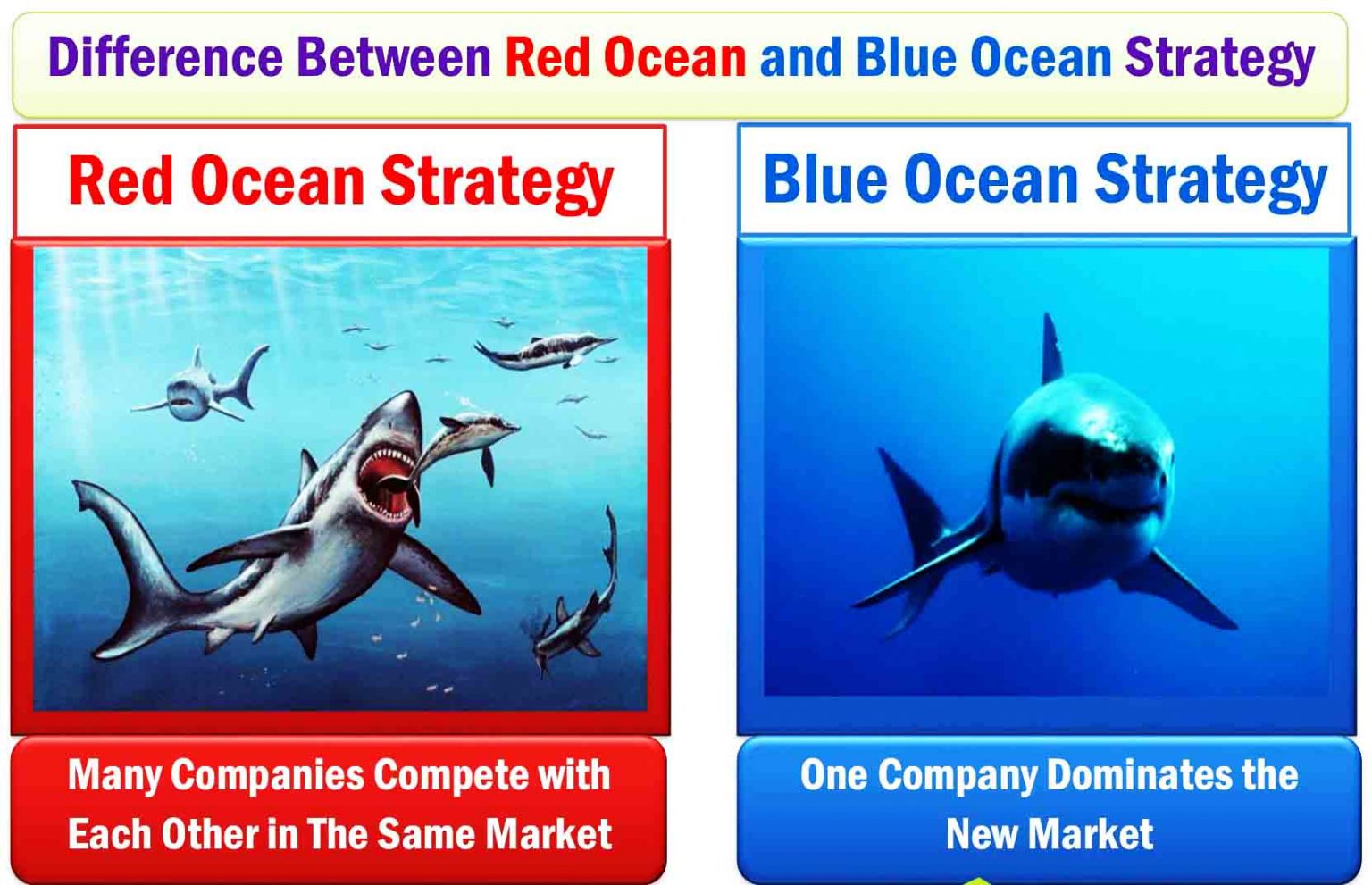
Red Ocean and Blue Ocean Strategy Difference & Examples
In other words, a red ocean is an existing/known market space with a lot of competition.. Blue Oceans. On the other hand, we have blue oceans. A blue ocean is fresh, clean, and clear. There might be a shark here and there in blue oceans, but in general, you're going to find a lot of delicious fish (your clients/customers) that are ripe for the taking.

Blue ocean strategy; how to turn a red ocean into a blue ocean
Red ocean vs blue ocean. The main idea behind the names of blue and red ocean strategies is color associations. The blue color is calm and relaxing, it also symbolizes depth, stability, and even intelligence. For SaaS, such an environment is advantageous and promising, with lots of new opportunities. On the contrary, red color is associated.
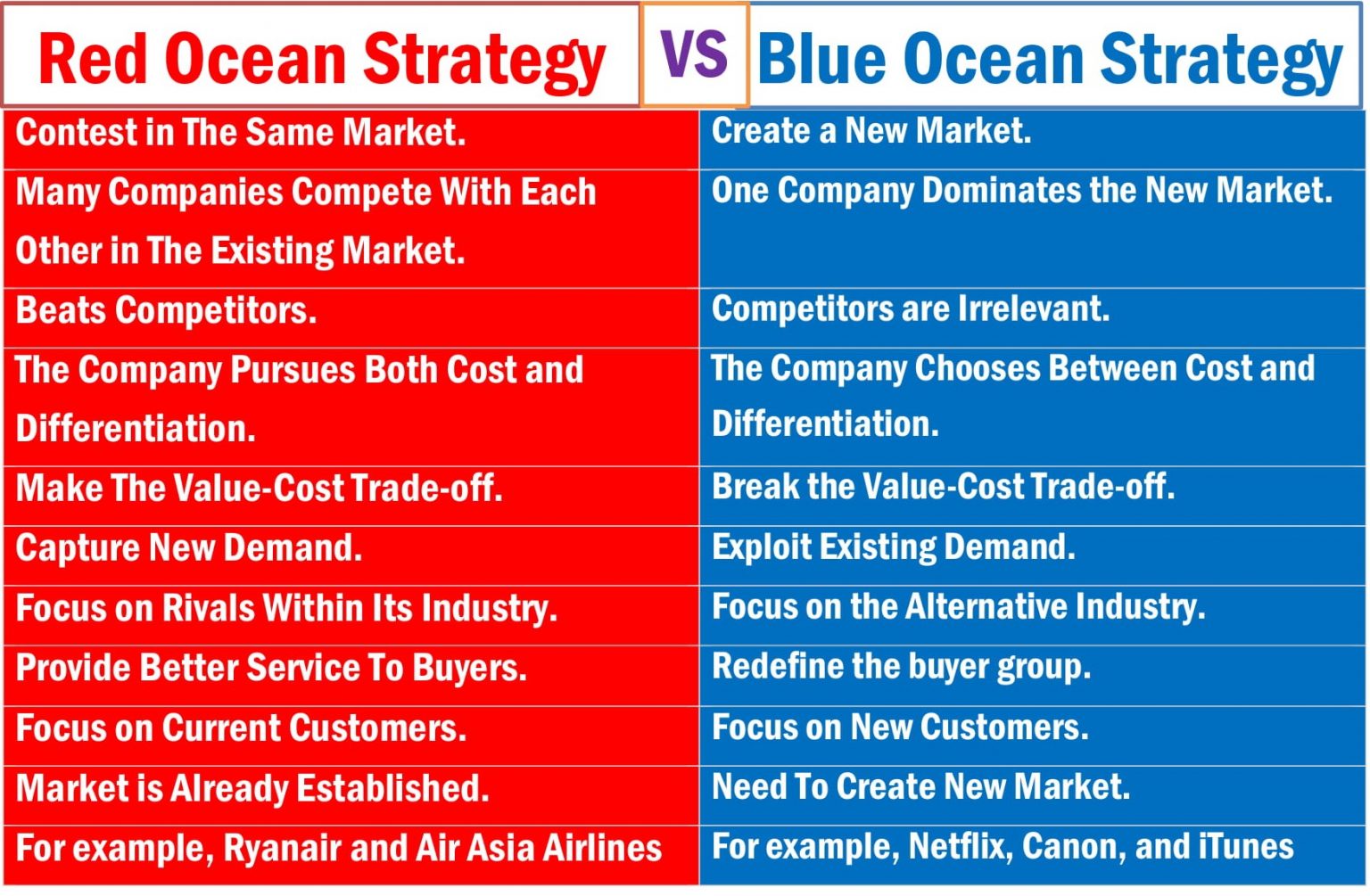
Red Ocean and Blue Ocean Strategy Difference & Examples
Red Ocean companies try to outperform their rivals to grab a greater share of existing demand. As the market space gets crowded, prospects for profits and growth reduce. Products become commodities and cut-throat competition turns the ocean bloody red. Blue Ocean companies, in contrast, access untapped market space and create demand, and so.

Red Ocean vs. Blue Ocean Strategy Characteristics, Challenges, and Opportunities
Image by Michelle Maria from Pixabay. A blue ocean is focused more on creating new markets based on upcoming trends or demands of consumers. For example, if a new generation of smartphones comes.

A Guide to Blue Ocean Strategy Business 2 Community
The all-in-one boating app revolutionising the marine navigation industry. Try it for free. savvy navvy removes the clutter seen in other apps making it easy to see where you are
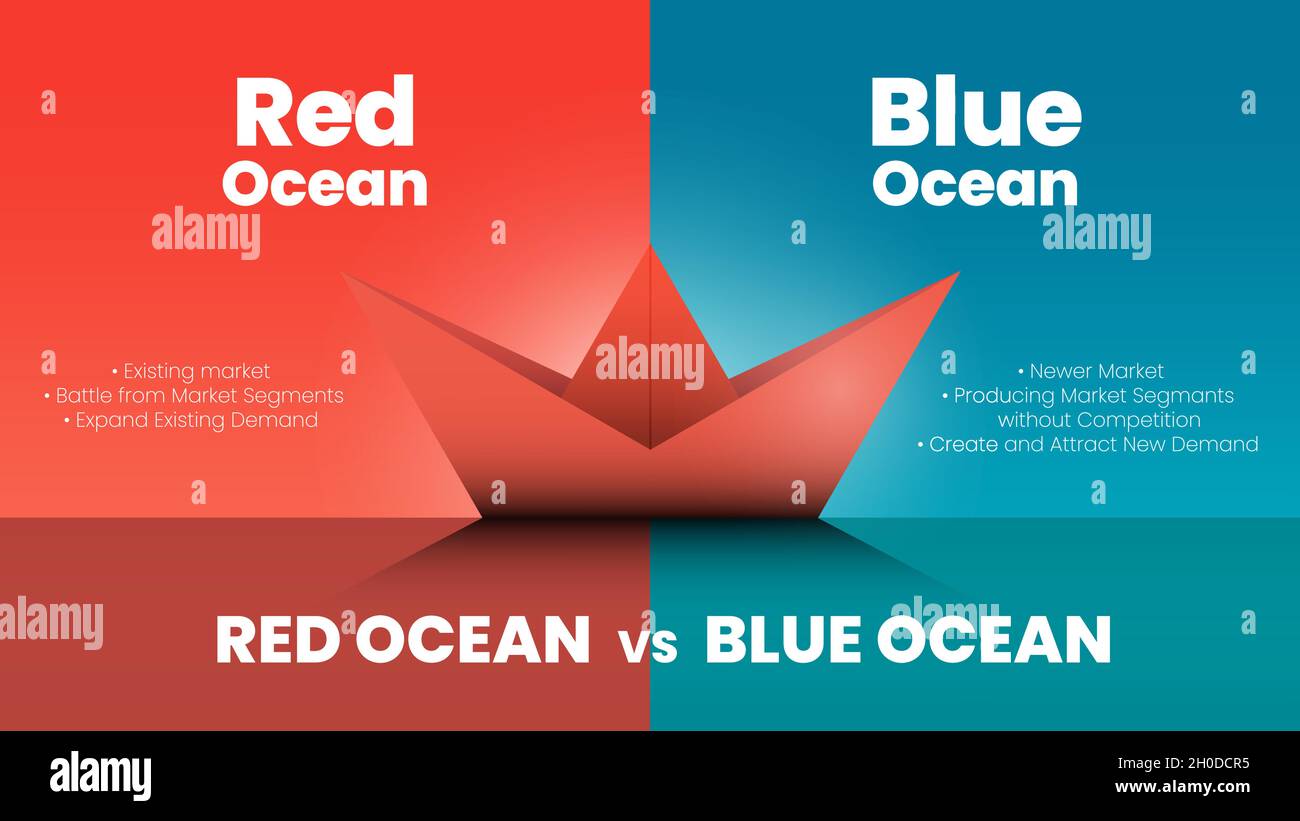
The marketing red ocean and blue ocean vector presentation compare 2 markets called blue ocean
The Blue Ocean business strategy promises uncharted territory and innovative potential, while the Red Ocean presents a well-known battlefield with fierce rivalry. The decision between these approaches ultimately comes down to a company's objectives, willingness to take on risk, and desire to explore creative paths in the wide and constantly.

RED AND BLUE OCEAN Digital Maketing Indonesia
In a blue ocean strategy, companies focus on innovation rather than competition. By creating new market space, they can avoid the intense competition that characterizes red ocean markets. This can lead to higher profits and greater long-term success. A red ocean strategy, on the other hand, is focused on beating the competition in existing markets.

The blue and red ocean strategy definition takes its name from the best-selling Blue Ocean Strategy by two economics researchers, W. Chan Kim and Renée Mauborgne, published in 2005. This blue ocean strategy, ideal for SMEs and big companies and start-up aims to create new strategic spaces to direct the company's activity on an economic.
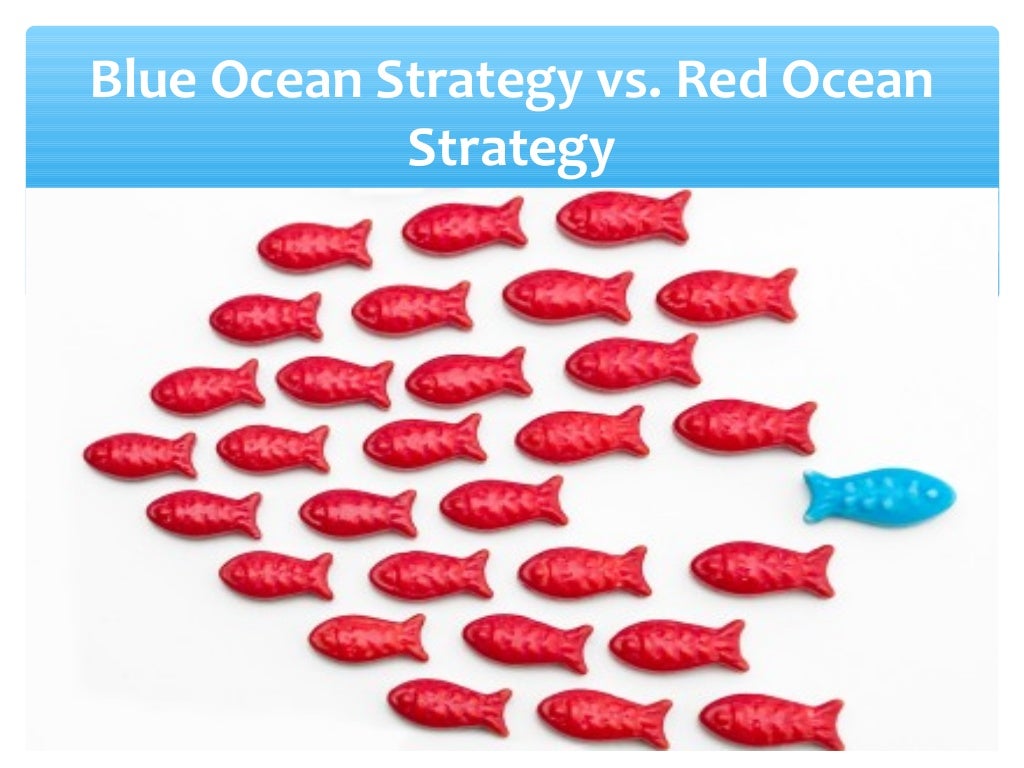
Blue Ocean versus Red Ocean
Hence, the term 'red' oceans. Blue oceans denote all the industries not in existence today - the unknown market space, unexplored and untainted by competition. Like the 'blue' ocean, it is vast, deep and powerful - in terms of opportunity and profitable growth. The chart below summarizes the distinct characteristics of competing in.
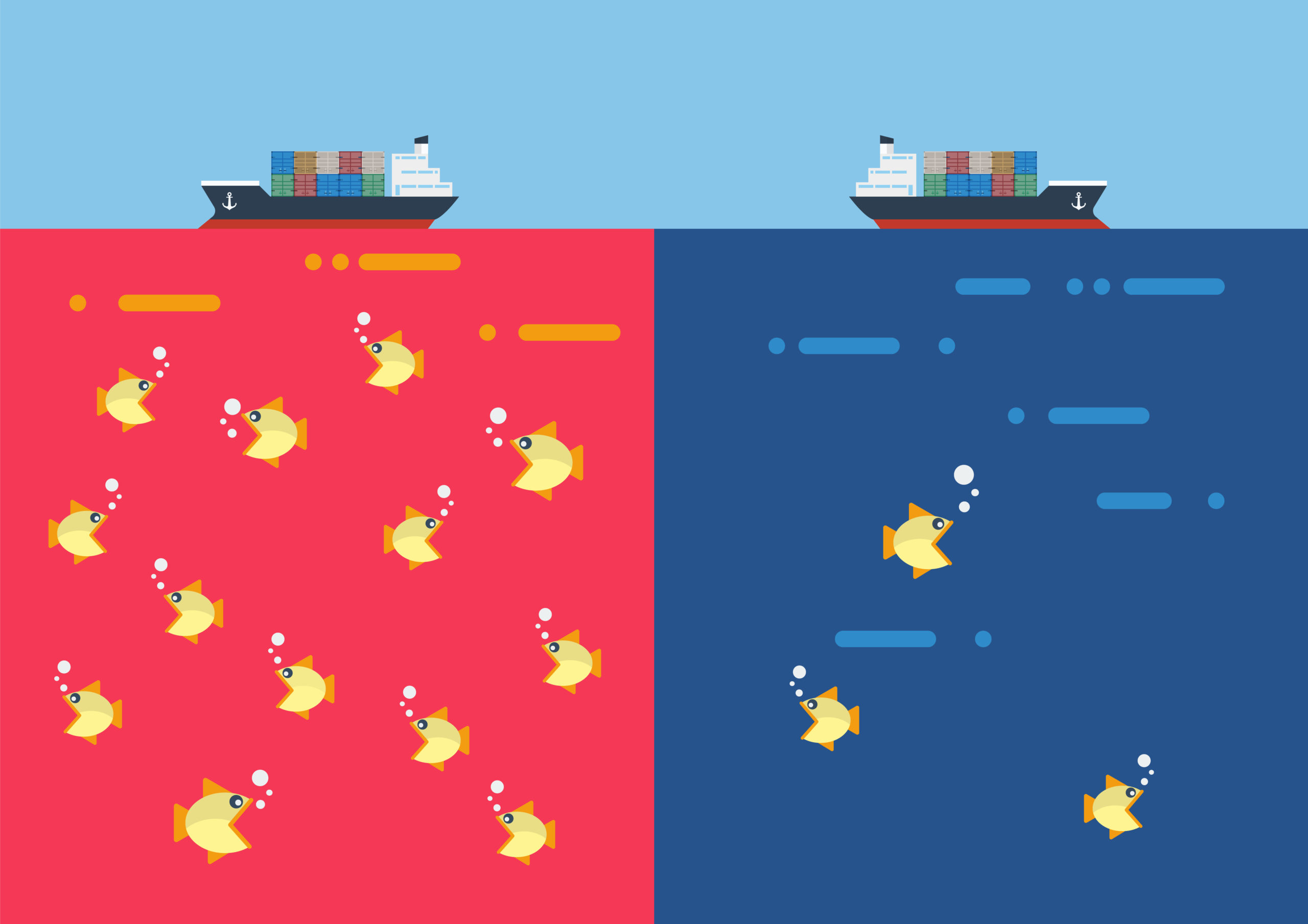
Blue Ocean Vs Red Ocean slide share
Blue Ocean vs Red Ocean: Main Differences. The analogy of red and blue oceans describes markets and industries. Red oceans are existing industries with demand and cutthroat competition. The color red denotes the bloody battle for revenue, existing market space, and success between companies. For example, the fashion industry.

Blue Ocean Strategy Strategie des blauen und roten Ozeans Xpert.Digital
The concept is quite simple to understand. The Red Ocean is where every industry is today. There is a defined market, defined competitors and a typical way to run a business in any specific industry. The researchers called this the Red Ocean, analogous to a shark infested ocean where the sharks are fighting each other for the same prey.

Blue Ocean vs Red Ocean Strategy Characteristics Example YouTube
The red ocean strategy aims to make your product survive in a market full of competitors. To beat the competition, companies try to differentiate their product from others. It could be through a unique product feature, a niche target audience, excellent customer service or competitive pricing. Conversely, in a blue ocean, the aim is not to beat.
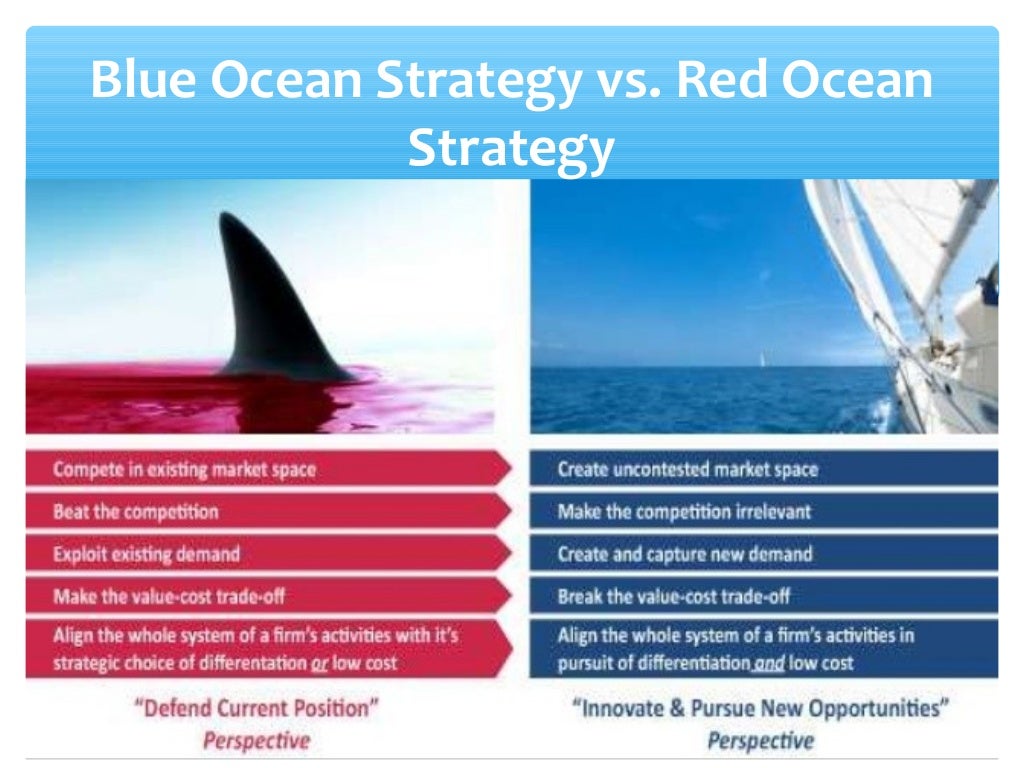
Blue Ocean versus Red Ocean
Blue ocean pedagogical materials, used in nearly 3,0 00 universities and in almost every country in the world, go beyond the standard case-based method. Our multimedia cases and interactive exercises are designed to help you build a deeper understanding of key blue ocean strategy concepts, developed by world-renowned professors Chan Kim and.
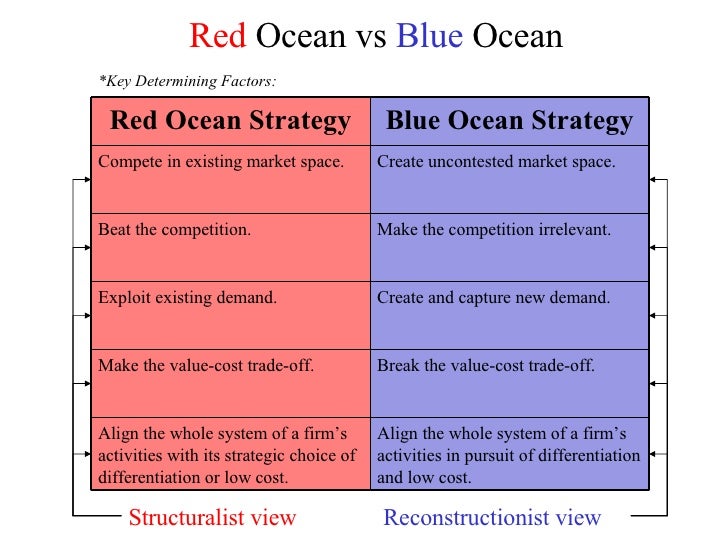
Blue Ocean Strategy
This is the unknown market space. In the red oceans, industry boundaries are defined and accepted, and the competitive rules of the game are known. Red ocean strategy is when companies try to outperform their rivals to grab a greater share of existing demand. As the market space gets crowded, prospects for profits and growth are reduced.
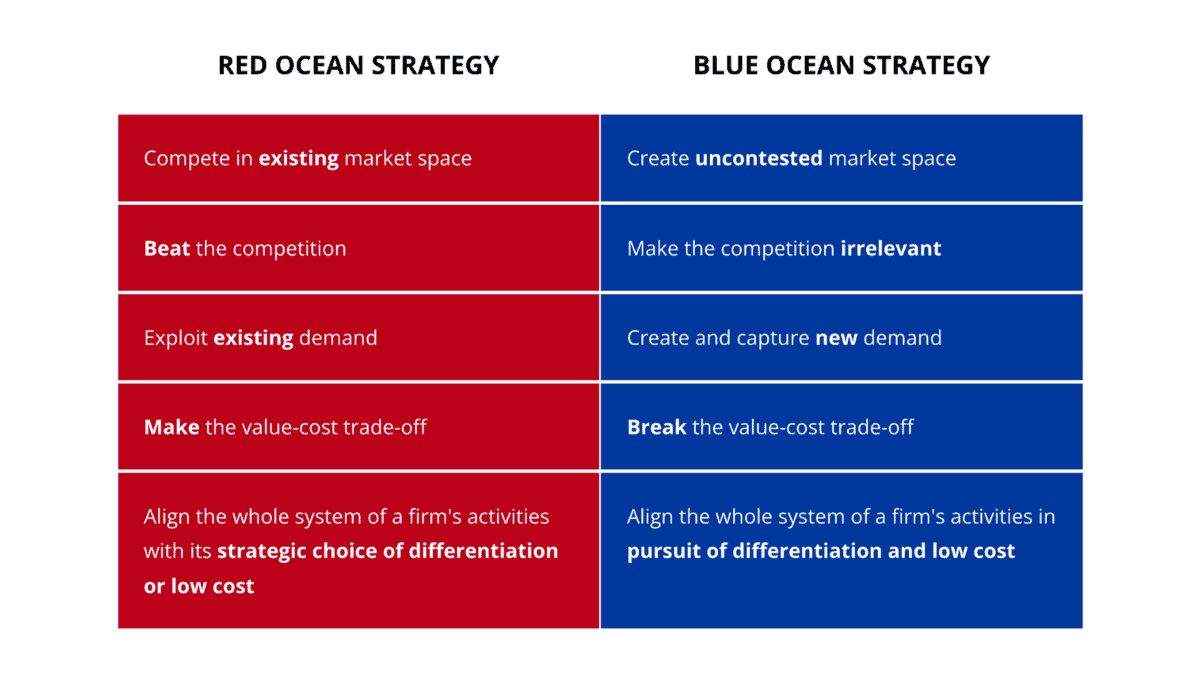
What Are Red and Blue Oceans? Blue Ocean Strategy Blue Ocean Shift
The red ocean vs. blue ocean metaphor. The red ocean and blue ocean metaphor is powerful in itself. The red ocean has fierce competition - the red indicating the blood of companies going head to head. The blue ocean is calmer - there are no other firms operating in it, so you don't have the intense competition.